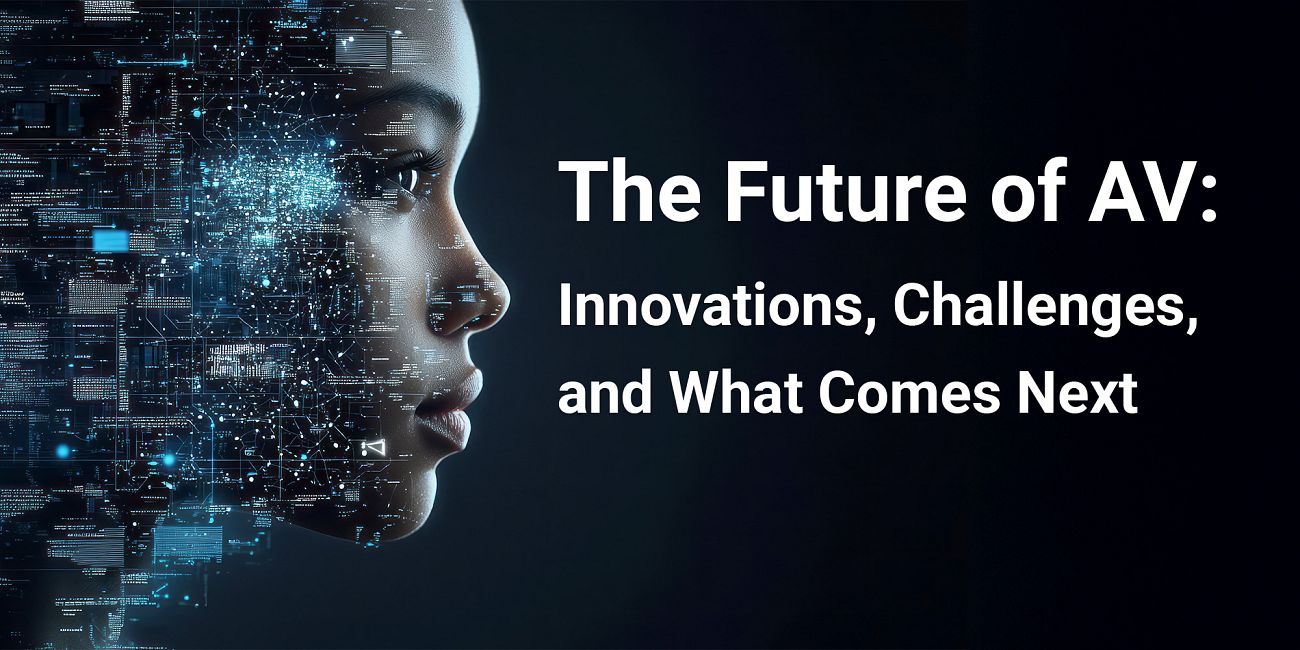
The Future of AV: Innovations, Challenges, and What Comes Next


Every year, ISE showcases the latest innovations in AV, offering a glimpse into where our industry is heading. ISE 2025 was no different, presenting new technologies that promise to reshape workplaces, entertainment venues, education spaces, and beyond. However, as much as these advancements excite us, the real challenge is bridging the gap between innovation and practical implementation, ensuring that businesses can deploy these solutions in ways that deliver real value.
At proAV, we sit at the intersection of technology and business needs, and while the industry is evolving at an unprecedented pace, we recognise that adoption isn’t always straightforward. Below are some of the biggest trends we saw at ISE 2025, along with the opportunities and challenges they bring.
AV-over-IP: The Future of AV Infrastructure
For the last several years, AV-over-IP has become the default method for distributing audio visual content. The shift away from dedicated AV signal distribution has already happened, and today, nearly all AV deployments operate on network-based infrastructure. The real challenge isn’t in adopting AV-over-IP—it’s in ensuring that IT networks are designed to handle the surge in bandwidth demand, ultra-low latency requirements, and the increasing expectation for seamless AV performance.
As AV systems require faster transmission speeds, networks must keep up. Low-latency delivery is critical, particularly in live environments where even a fraction of a second’s delay can disrupt the experience. Achieving this level of performance means reducing compression and conversion processes while ensuring that network architecture is capable of delivering AV signals with minimal delay.
Security is also an important consideration in AV-over-IP deployments, but advancements in device authentication are making integration with IT networks far smoother. Many modern AV devices now support 802.1x authentication, allowing them to conform to enterprise security standards without issue. However, since not all AV devices support this protocol, working closely with IT teams remains crucial. proAV works closely with clients to determine a secure and compatible deployment method, whether that involves 802.1x authentication or other secure solutions that align with their requirements..
The transition to AV-over-IP has already happened. What matters now is how organisations optimise their network infrastructure to support AV at scale, balancing performance, security, and long-term adaptability. A strong collaborative relationship between the client, the AV and IT teams is essential to ensuring that every device is accounted for, every security protocol is met, and AV solutions continue to deliver the seamless experiences businesses expect.
AI-Driven AV: A New Era for Managed Services?
 AI’s role in AV is growing, but the most immediate impact is in
predictive maintenance and remote management. AI-driven
monitoring tools can detect potential issues before they cause
failures, ensuring AV systems remain operational without
unexpected downtime. This is particularly valuable for enterprise
and mission-critical environments, where even a small disruption
can have significant consequences.
AI’s role in AV is growing, but the most immediate impact is in
predictive maintenance and remote management. AI-driven
monitoring tools can detect potential issues before they cause
failures, ensuring AV systems remain operational without
unexpected downtime. This is particularly valuable for enterprise
and mission-critical environments, where even a small disruption
can have significant consequences.
However, businesses are still adjusting to the idea of AI-driven AV. Many organisations are accustomed to reactive maintenance models, where problems are only addressed after they arise. Shifting to an AI-powered proactive model requires a new mindset, but the benefits are undeniable: fewer disruptions, reduced operational costs, and better overall system performance.
As the industry moves forward, the question isn’t whether AI will be a part of AV—it’s how quickly businesses will embrace it. For integrators like proAV, this presents an opportunity to help organisations redefine how they manage AV ecosystems, using our proActiV platform to deliver smarter, more resilient solutions.
Hybrid Work: The Gaps That Still Need to Be Closed
 Despite years of advancements, hybrid work solutions are still evolving—and many organisations are still struggling to make their meeting spaces work seamlessly for both in-person and remote participants.
Despite years of advancements, hybrid work solutions are still evolving—and many organisations are still struggling to make their meeting spaces work seamlessly for both in-person and remote participants.
At ISE 2025, we saw further developments in AI-driven cameras, automated room scheduling, and interoperability between platforms like Teams and Zoom. These technologies are meant to make hybrid meetings more seamless, but the reality is that many businesses still face user adoption challenges and compatibility issues between different systems.
The industry needs to move beyond just providing the technology—the focus should be on ensuring usability and long-term adoption. That means offering training, support, and ongoing optimisation to make sure employees are using hybrid work tools effectively. Technology alone isn’t the solution—it’s how it’s implemented that makes the difference
Immersive AV: The Rise of Experiential Spaces
 One of the most exciting shifts in AV is the rise of immersive
experiences, where AV technology is used to create dynamic,
interactive environments. We’re seeing more clients explore
high-resolution LED walls, extended reality (XR), and spatial
audio to transform corporate lobbies, retail stores, and training
spaces.
One of the most exciting shifts in AV is the rise of immersive
experiences, where AV technology is used to create dynamic,
interactive environments. We’re seeing more clients explore
high-resolution LED walls, extended reality (XR), and spatial
audio to transform corporate lobbies, retail stores, and training
spaces.
However, as immersive AV adoption grows, so do the challenges. High costs, content creation bottlenecks, and uncertain ROI mean that many businesses are still hesitant to invest. It’s not enough to install the latest interactive displays— the real question is how to create engaging, high-quality content that justifies the investment.
For industries like retail, corporate branding, and higher education, immersive AV has huge potential, but success depends on long-term strategy and execution. As technology improves and costs come down, we’ll likely see wider adoption in the coming years
Sustainability in AV: More Than a Buzzword
 Sustainability is gaining traction in AV, but the industry still
has a long way to go. Many manufacturers are prioritising
energy-efficient technology, recyclable materials, and longer
product lifespans, but true sustainability requires an industry-wide commitment to better lifecycle management and circular
economy principles.
Sustainability is gaining traction in AV, but the industry still
has a long way to go. Many manufacturers are prioritising
energy-efficient technology, recyclable materials, and longer
product lifespans, but true sustainability requires an industry-wide commitment to better lifecycle management and circular
economy principles.
One of the biggest challenges is cost—many sustainable AV solutions come with a higher price tag, which makes adoption slower. However, as corporate ESG mandates continue to grow, we expect to see more pressure on manufacturers and integrators to provide greener solutions.
For AV buyers, sustainability is starting to influence procurement decisions, but often cost and performance still take priority. That said, forward-thinking organisations are looking at long-term energy savings and reduced environmental impact as a critical factor in their AV strategy. At proAV, we believe that sustainability must be more than a marketing point—it should be a fundamental part of how we design and deliver AV solutions.
Final Thoughts: What Comes Next?
 As we reflect on the trends shaping AV in 2025, one thing is clear: innovation alone isn’t enough. The industry must focus on real-world implementation, ensuring that businesses can adopt and integrate these technologies effectively. At proAV, we see our role as more than just an integrator—we’re here to help our clients navigate these changes, balancing innovation with practicality.
As we reflect on the trends shaping AV in 2025, one thing is clear: innovation alone isn’t enough. The industry must focus on real-world implementation, ensuring that businesses can adopt and integrate these technologies effectively. At proAV, we see our role as more than just an integrator—we’re here to help our clients navigate these changes, balancing innovation with practicality.
Whether it’s AI-driven managed services, hybrid work solutions, immersive AV, or sustainability initiatives, the future of AV is about more than just technology—it’s about making it work for businesses.
ISE 2025 gave us a glimpse into what’s possible. Now, it’s time to turn those possibilities into real-world solutions.
Share